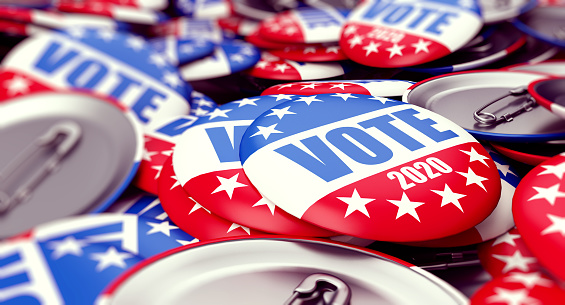With Nov. 3 rapidly approaching, Americans are faced with a major question: not whether to vote, but how?
By mail, or in person?
It’s a big question, in what looks to be the biggest election in history, with some experts predicting 150 million ballots to be cast, the most ever.
And election officials are worried — particularly about those in-person voters expected to account for about 60 million ballots, or 40% of the total, reports the New York Times.
In-person voting is nearly certain to be higher in Black and Latino neighborhoods, where trust in government, including the Postal Service, is lower than elsewhere in the country.
“Unnerved by the difficulties of voting amid a pandemic and faced with both the political static injected by President Trump and the limits on expanding voting by mail, state and local authorities across the country are racing to rethink and reinforce” in-person polling sites, the Times says.
There are real concerns about mail-in voting, too.
“Thousands of absentee ballots get rejected in every presidential election. This year, that problem could be much worse and potentially pivotal in hotly contested battleground states,” says the Associated Press.
Mailed ballots can go uncounted because they arrive too late, because voters fail to sign them, or because signatures don’t match what’s on file at local election offices.
Vote-by-mail rejections could be of particular concern for Democrats; the party has seen a surge in absentee ballot applications this year.
Yet one voting expert tells the Times that in-person voting sites are the bigger problem.
“In some of our minds, the nightmare scenario isn’t about voting by mail,” said Paul Gronke of Reed College in Portland OR. “It’s a meltdown at the polling places.”
That could happen, Gronke says, “if there’s a spike in the pandemic or a shortage of poll workers,” which could mean “a last-minute reduction in in-person voting.”
That potential shortage of poll workers is another element of the puzzle driven by Covid-19: older people who comprise a majority of poll workers in ordinary election years may feel unsafe in 2020 — but will younger people step up to replace them?
Election officials and activists in both parties, the Times says. “are amping up efforts to hire and train poll workers; integrate stadiums, arenas and malls into their voting options; and come up with contingency plans if there’s a surge in coronavirus cases in the fall.”
Government officials and nonprofits, like More Than a Vote, the athletes’ collective represented by LeBron James, have started national campaigns to recruit younger poll workers.
“Businesses are playing an increasing role,” the Times says noting that Old Navy will give a paid day off to any of its 50,000 employees who work at the polls.
Hundreds of other companies, from Coca-Cola to Patagonia, have made Election Day a paid holiday or given employees time off to vote or support the election effort, and nearly half the states require companies to give workers time off to vote.
So what’s a voter to do? Will all this help ease the stress of a fraught election — and keep it free and fair?
The answer is unsatisfying: no one knows.
But that shouldn’t stop anyone from voting.



